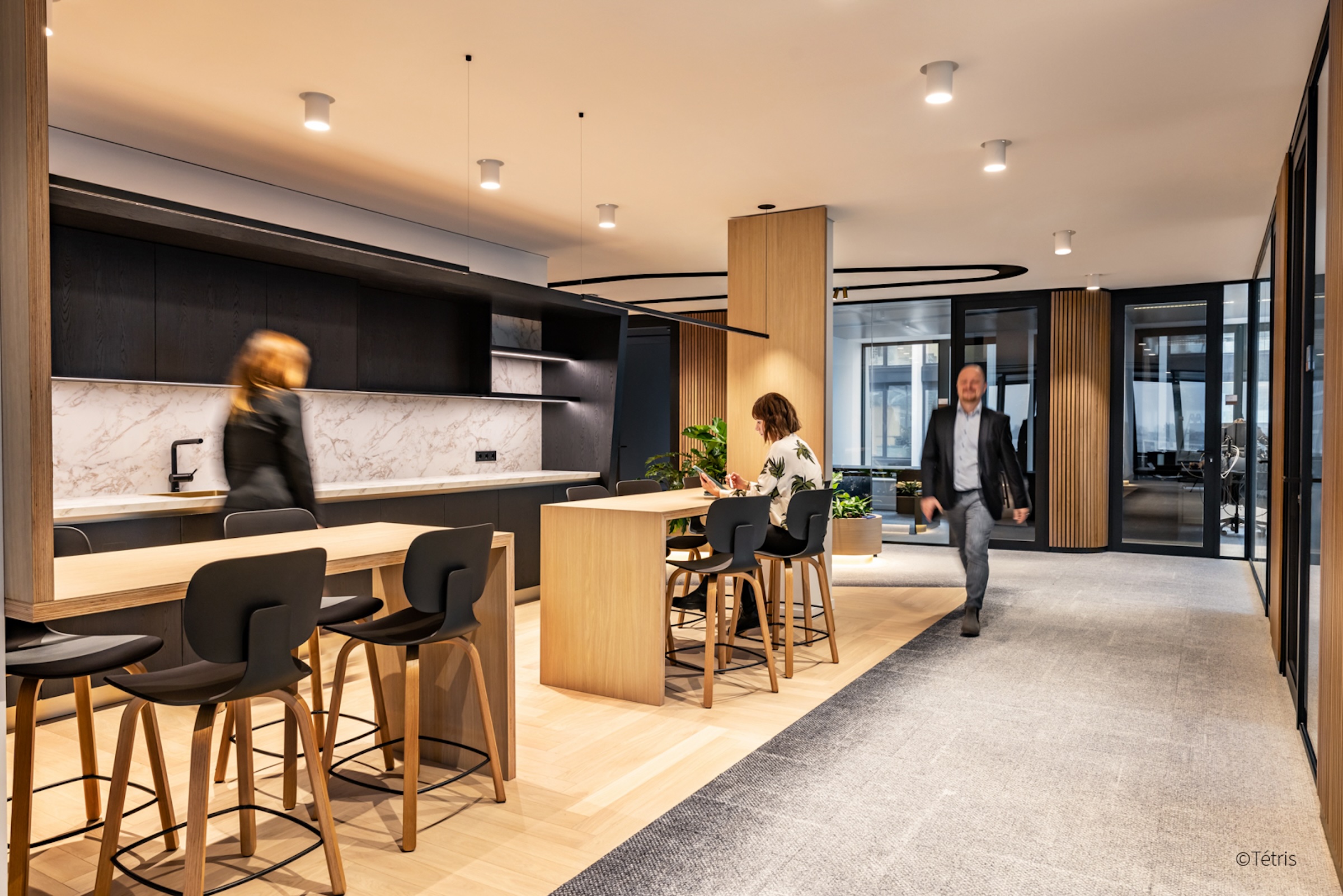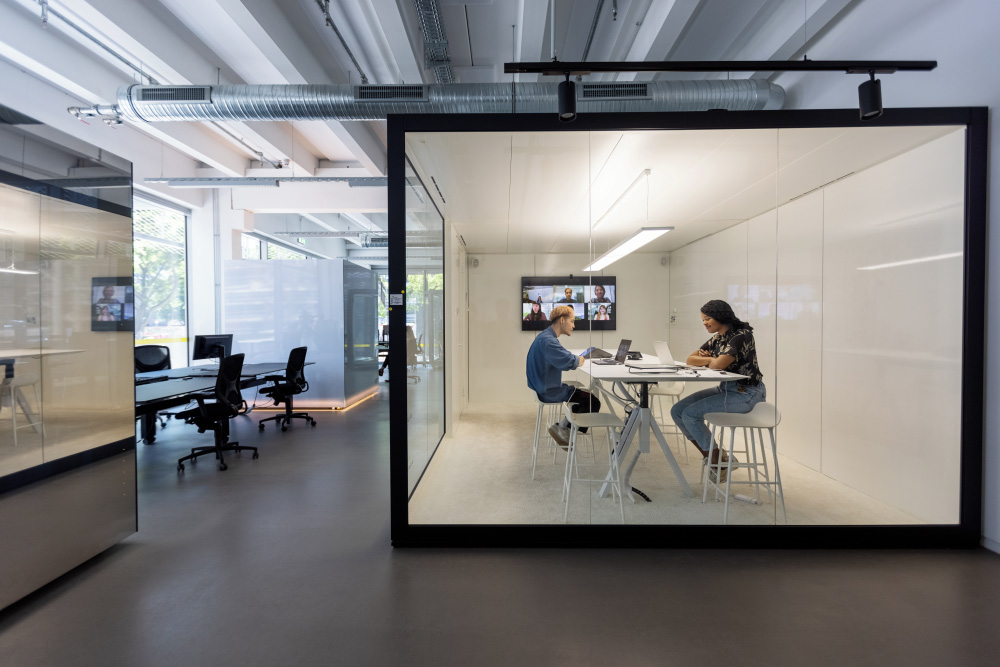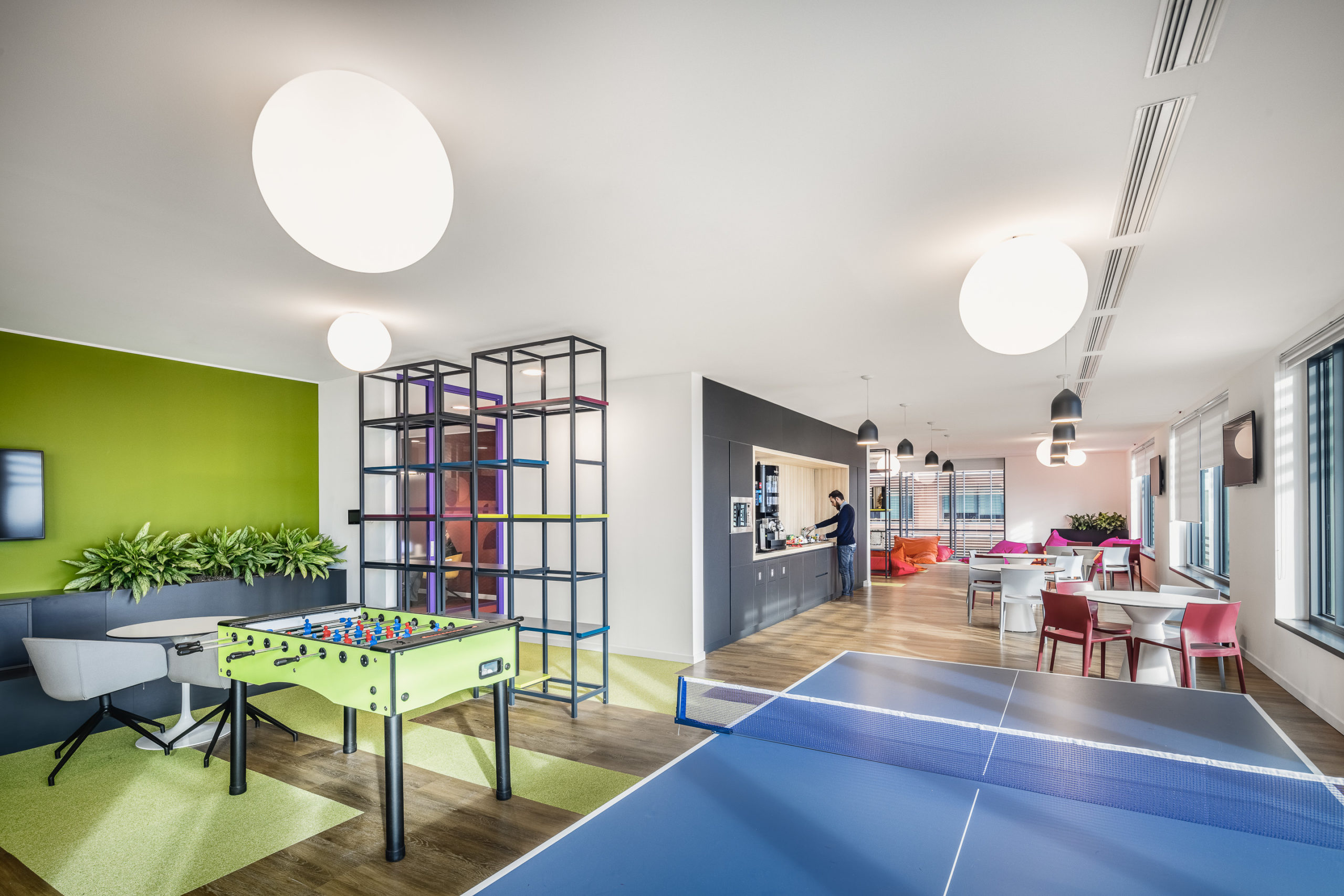After an unforgettable 18 months, lockdowns are being eased and the lifting of restrictions means one thing – people are returning to the office. But if the past year and a half has taught us anything, it’s that the office needs to be reimagined in a way that puts people at the heart of everything. In fact, JLL’s 2023 Top 10 Global CRE Trends reveal that a humanised workplace is one of the ways that firms can reinvent their corporate real estate strategies.
“We can’t go back to the way we were before the pandemic. Everything you thought you knew about office design needs to be ripped up! Break all the rules that were in place before!” Ilaria Parmigiani, Design Director at Tétris UK, is very emphatic with her approach.
Parmigiani says that people should be incentivised to go back to the office. One way to do this is by redesigning the office into a place that is multifunctional and allows staff not just to work, but to live, socialise and have worthwhile experiences where they feel rewarded for commuting to the office – it should become a destination.
Parmigiani’s sentiment is reiterated by Amaury Watine, Creative Director for EMEA at Tétris. “If we humanise the office and make it somewhere people actually want to be by producing a truly immersive experience, people will be enticed to go back. We need to reimagine how a space can be used to bring out the best in people.”
1. Creative spaces that inspire
Creativity usually strikes when we’re comfortable and in surroundings that inspire a certain mood, be it through colours, textures, or other elements.
“It’s important to create spaces that evoke all five senses to generate a specific mood that inspires creativity,” says Watine.
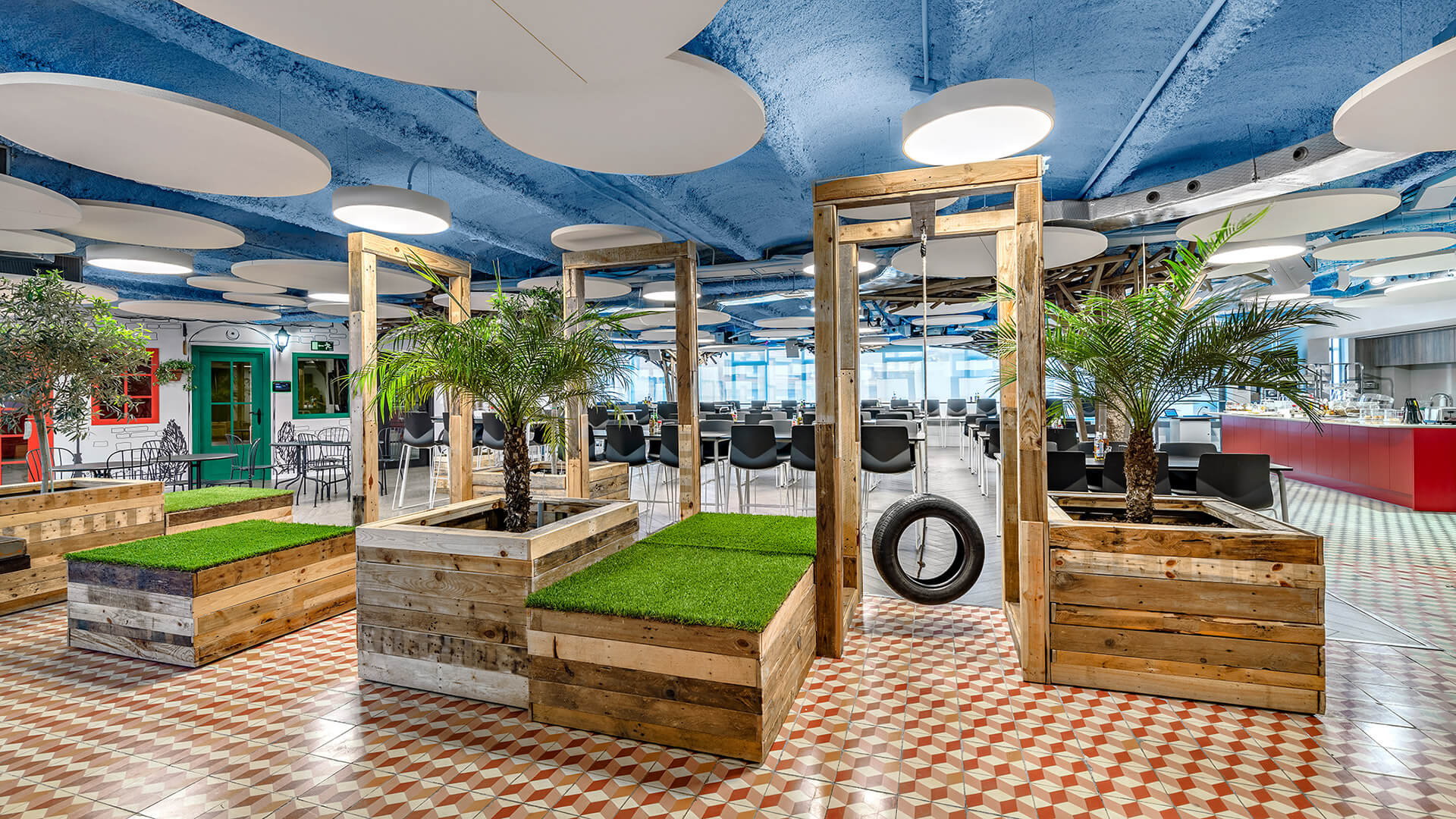
Comfort, flexibility and the ability to share ideas should be at the top of the agenda. Modular furniture can create a space suitable for a variety of tasks that can be quickly changed to accommodate employee needs. Creative solutions such as whiteboards, smartboards and corkboards will remain, along with the addition of glass surfaces that can be written on and reused, which are not only functional but will add an ever-changing, creative aesthetic.
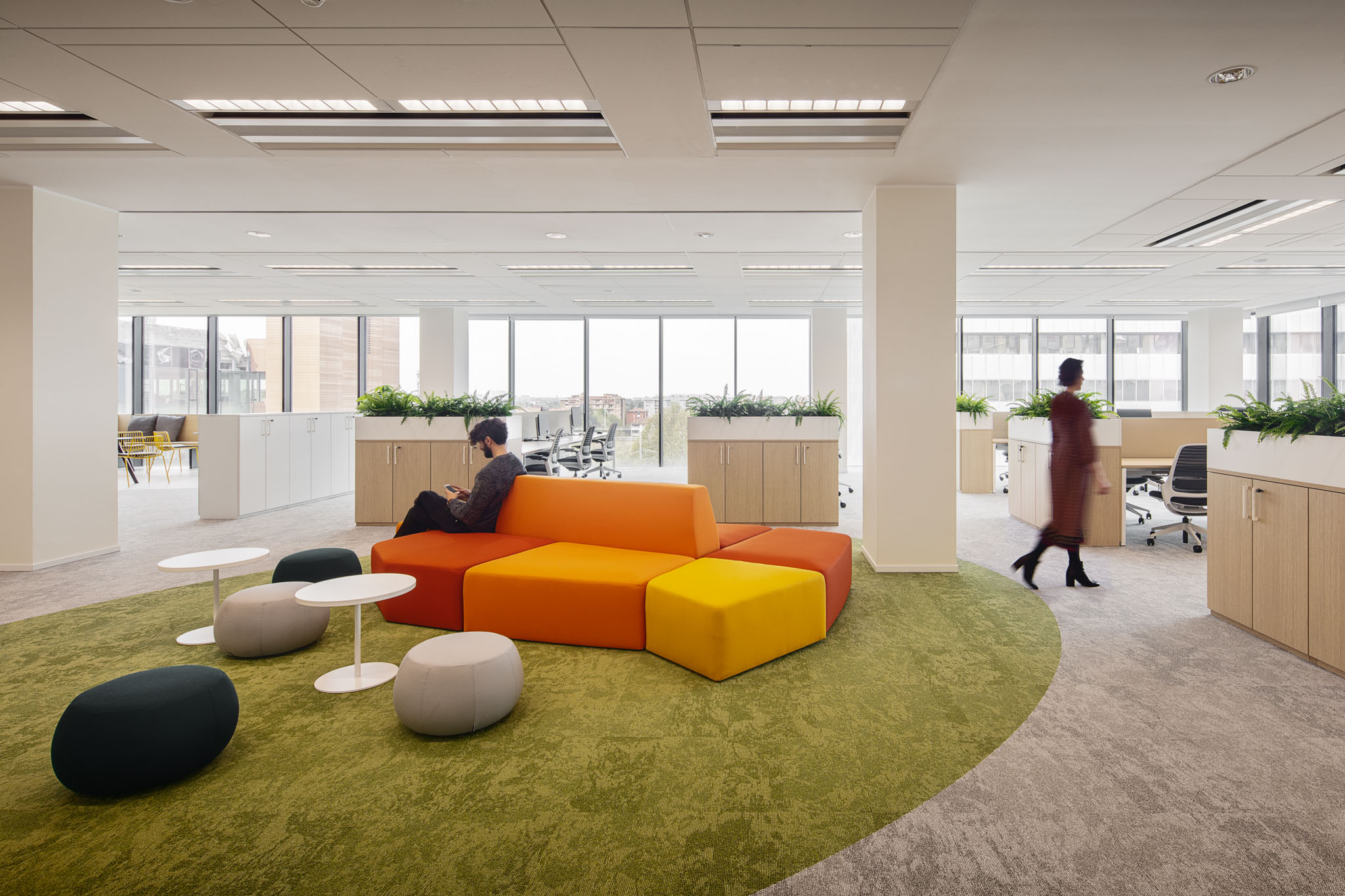
En termes de confort, les hamacs, les chaises suspendues et les chaises longues peuvent favoriser la détente et offrir un changement de perspective physique qui peut inspirer des idées originales.
Il est également important de soigner l’éclairage : une lumière chaleureuse incite à sortir des sentiers battus. Vous pouvez même installer un éclairage qui se modifie durant la journée et peut être contrôlé via une application afin que les gens puissent tirer le meilleur parti de leur espace pour créer une ambiance qui les aide à se concentrer sur une tâche spécifique.
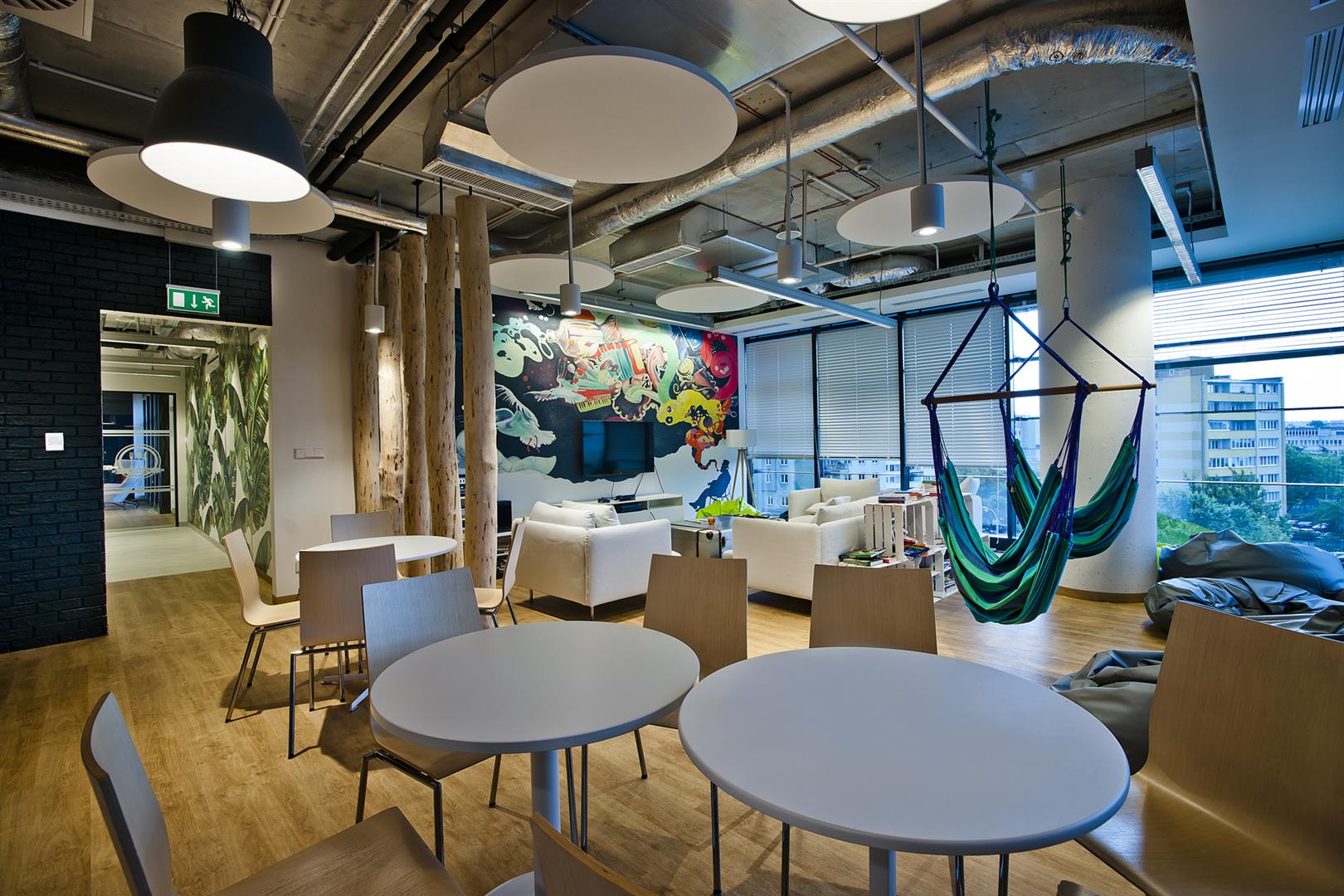
2. Learning-focused spaces
Areas that facilitate learning and development are going to be designed with hybrid working in mind.
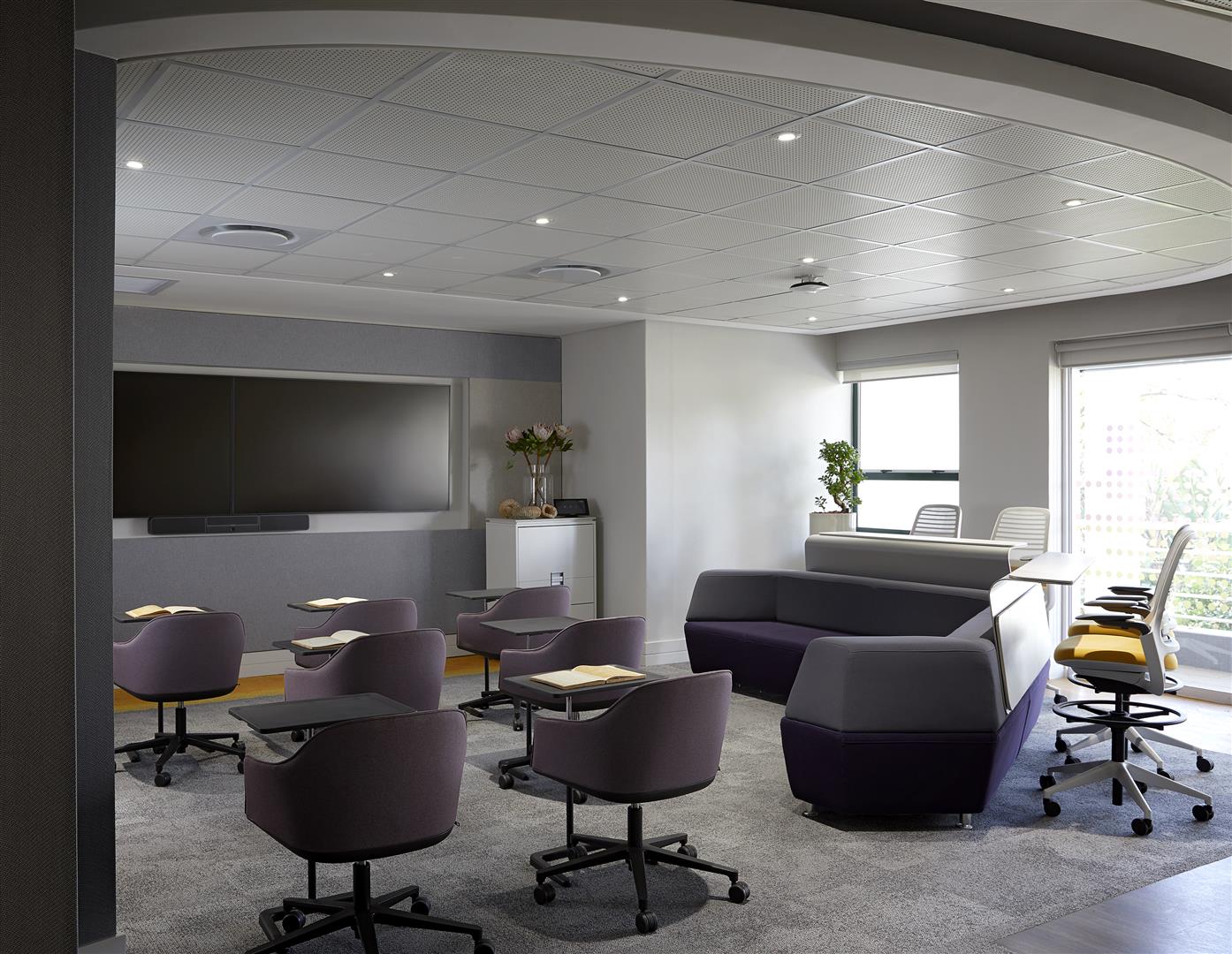
Any space used for training should have integrated technology so people can bring their laptops for taking notes, but Watine notes that this is just one of many considerations when fitting out for training sessions. “It shouldn’t feel like a classroom – it could be an auditorium, or even just a large space with flexible furniture solutions that can be changed, added or built to accommodate an audience of any size. Most importantly, we need to think about recording – the acoustics of your learning and development space should be a priority, as many people will either be dialling into your training or catching up at a later date.”
3. Collaborative coworking spaces
After not being able to interact with one another in person, people are craving human contact. We need to reconnect with one another, not only because we’ve been missing that spontaneous interaction, but because we need to build budding friendships, according to Parmigiani. “A lot of people moved out of the city or even back to their native country. The pandemic displaced so many people, so friends you had might suddenly have moved miles away. If we have collaborative spaces designed not just for work but to socialise and relax, we can build new friendships with people we can see regularly. A people-centric design can inspire people not just in terms of work, but also help them reconnect with others.”
Coworking spaces should be fitted out with lounges, large tables and benches to allow people to work alongside one another in a relaxed, collaborative way that encourages conversations, collaboration and socialising. By toning down the formal office approach and ushering in design built around human interactions, people can get the most out of being in the office as its these spontaneous moments with one another that truly inspire.
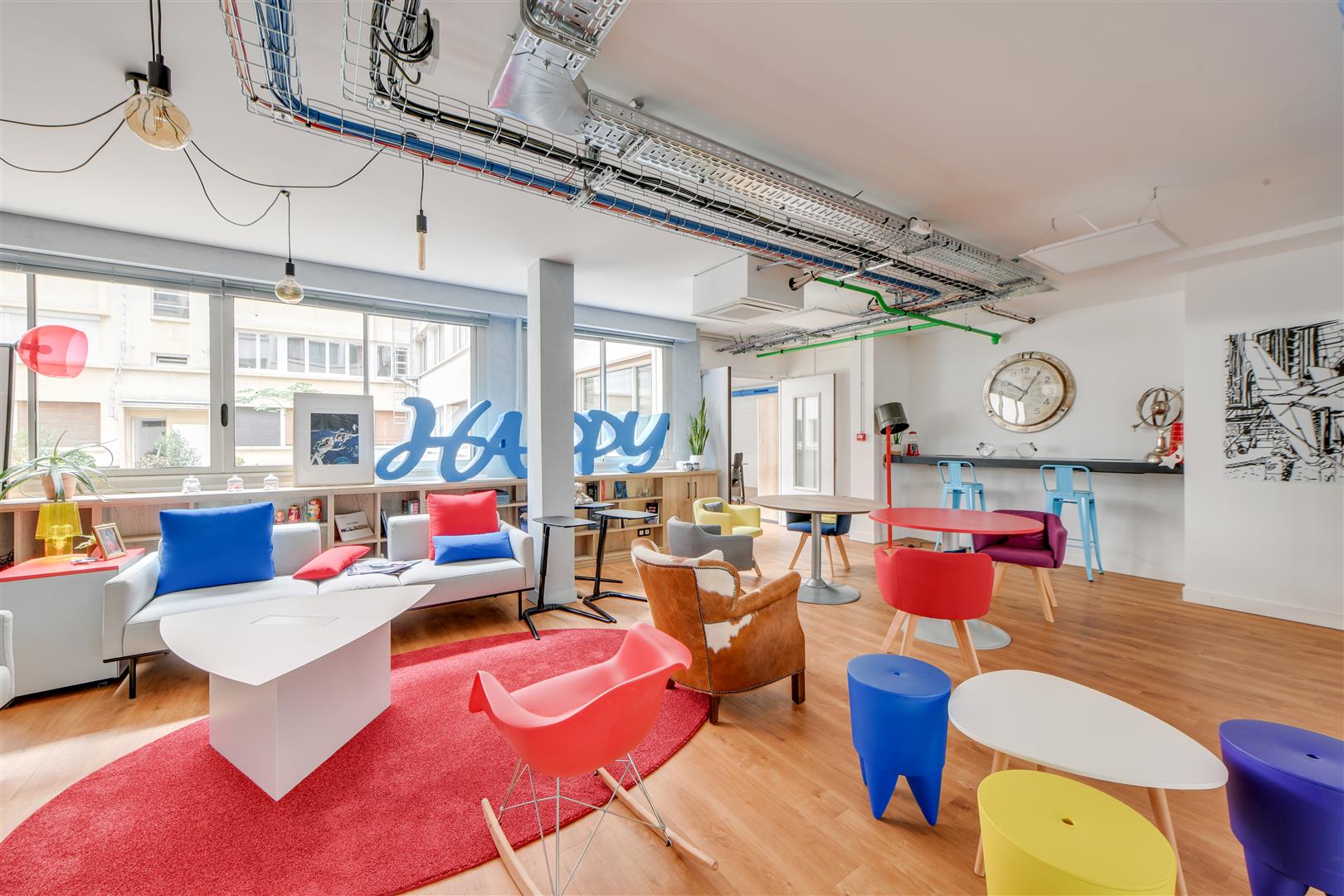
4. Outdoor spaces that connect you with nature
It can be tough providing outdoor spaces, especially if your office is in a city centre. However, the importance of having an outdoor space – or a connection to nature – has never been more evident. For example, a lot of people in major cities don’t necessarily have a garden because they may live in an apartment block, so if your office can offer an open, outdoor space, or plants and elements inspired by nature, people are more likely to commute in.
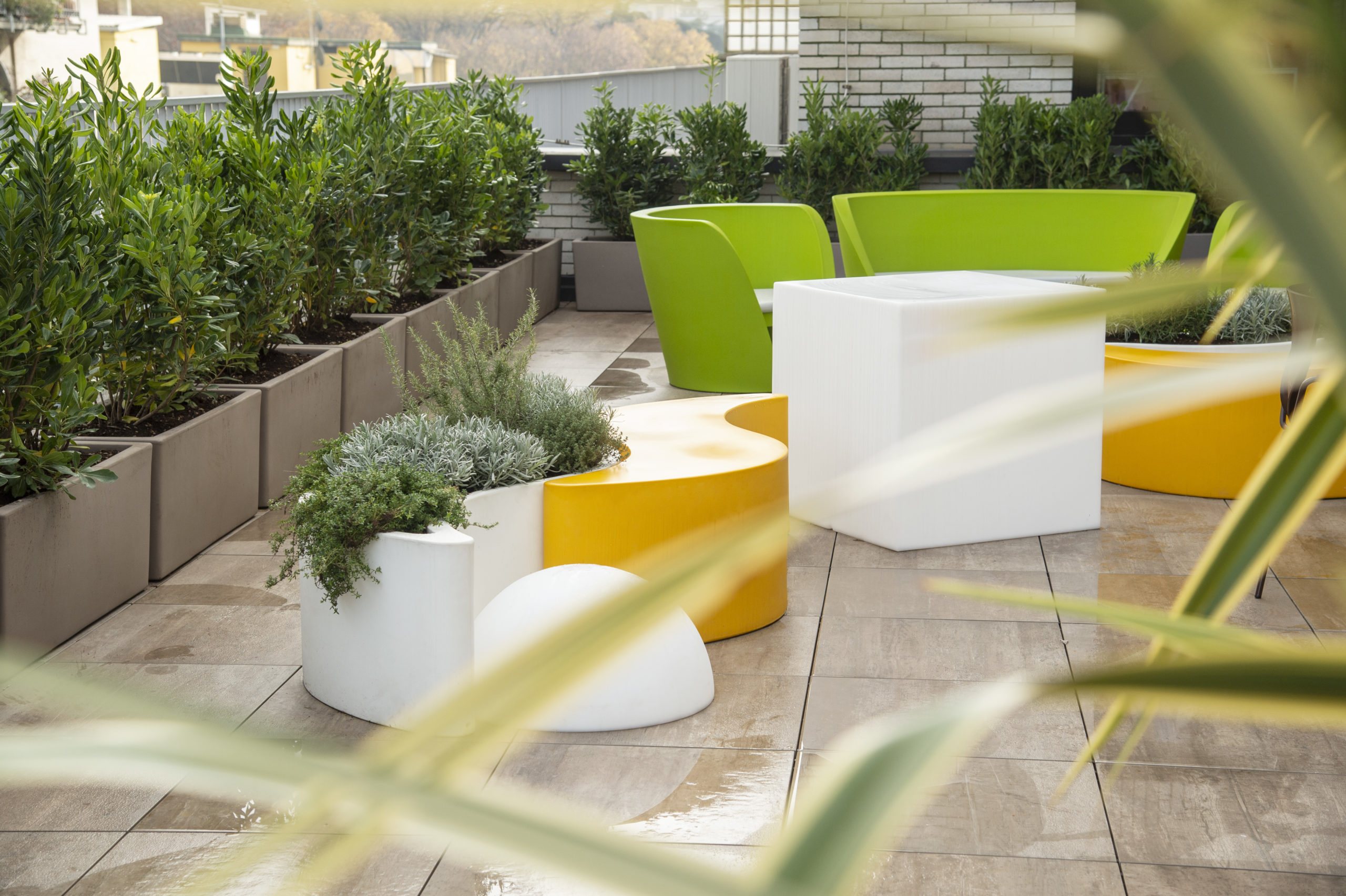
Biophilic elements can have a positive impact on both mental health and productivity. For example, when we designed InteriorWorks’ workplace in Amsterdam, we brought the outside in through a biophilic-first approach, and the number of sick days people took reduced dramatically.
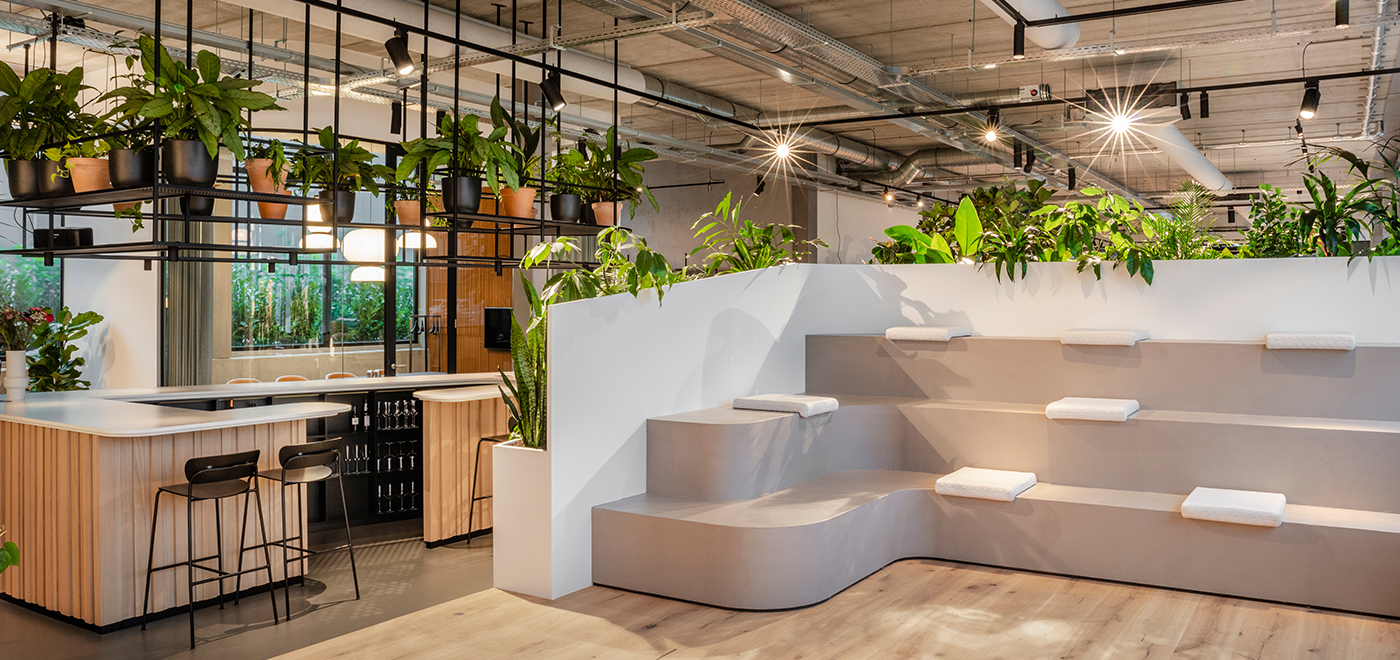
5. Private spaces for calls, relaxation and individual work
Inevitably, the office will be used for individual work or to take calls. Desk factories are going to remain a thing of the past, but employees also need to be able to get away and focus.
Modular partitions and furniture can create a pod for work that requires concentration. For private calls, phone booths with curtains create a separate space that is not completely closed off, with natural elements such as cork to provide soundproofing and privacy.
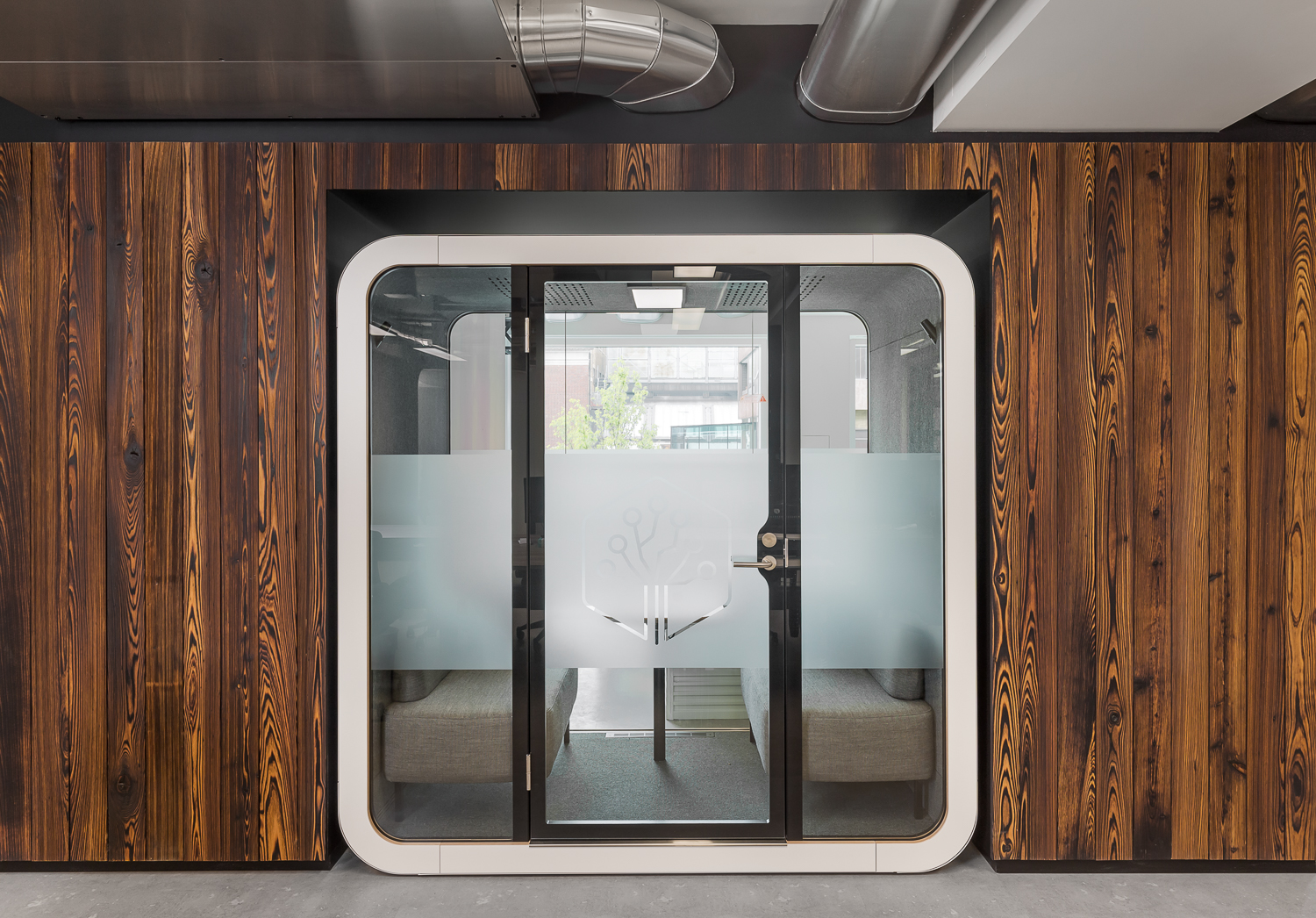
A library style area is also a good option – a quiet zone that allows people to do focused work but with the reassurance that they’re not alone and can interact with others if needed.
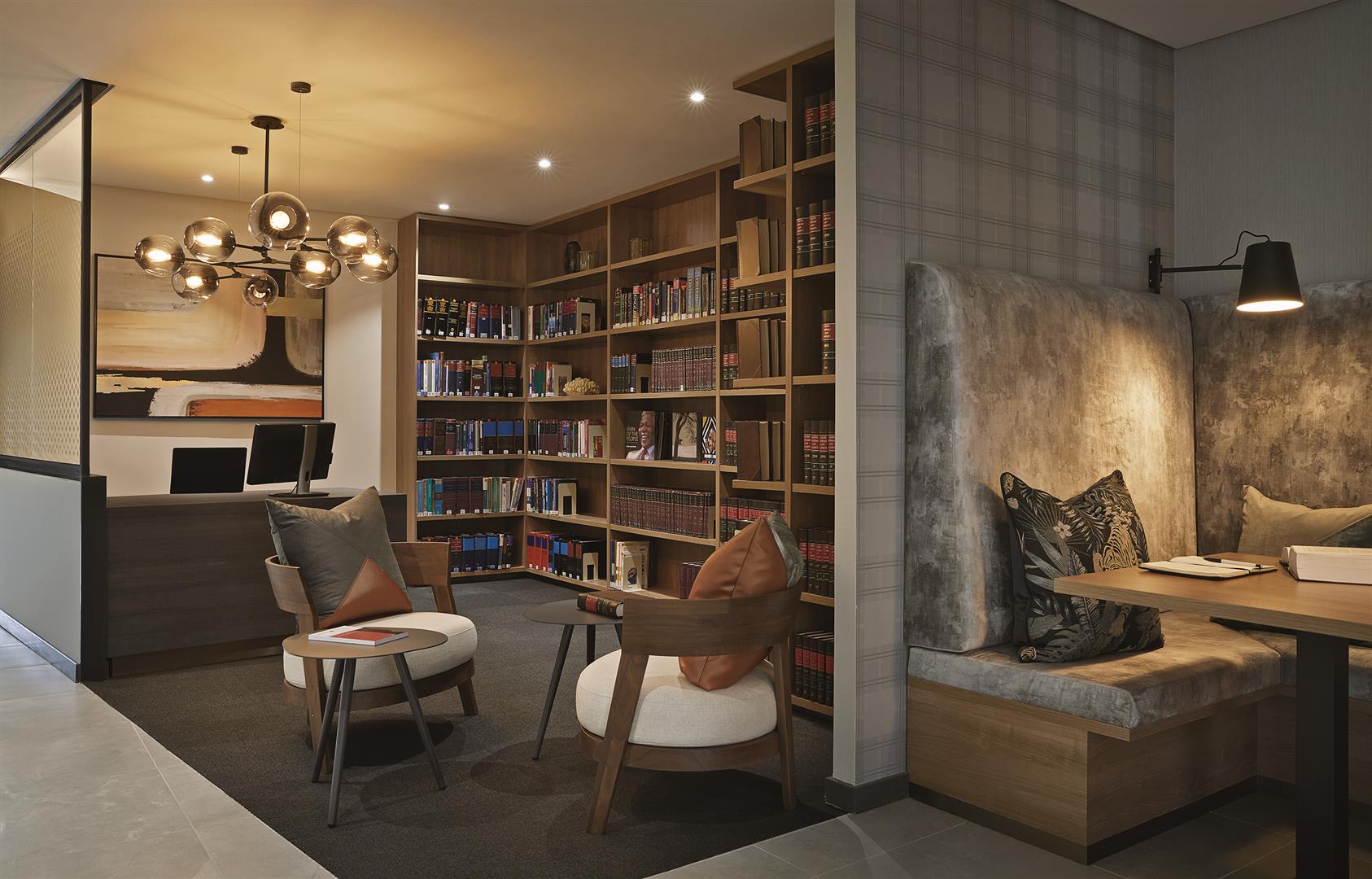
Private spaces aren’t just individual areas for people to work – they’re also spaces to disconnect and recharge. “You could have a specific room where people go to rest, relax and recharge; a quiet zone for them to switch off. This area could focus on the five senses so you’re in touch with yourself and transported to another place that doesn’t feel like the workplace,” Watine says. “Elements like blackout curtains, projections with scenes of nature, certain aromas, and natural sounds will all contribute to the atmosphere.”
By incorporating these five workspaces within your office, you can create unique, meaningful experiences where there is a space suitable for everyone’s needs, from collaborative working to socialising. A human-first approach will encourage people to return to the office – a welcome change from being isolated from one another for the past 18 months.

We can help you design and build
Tomorrow’s Workplace.
